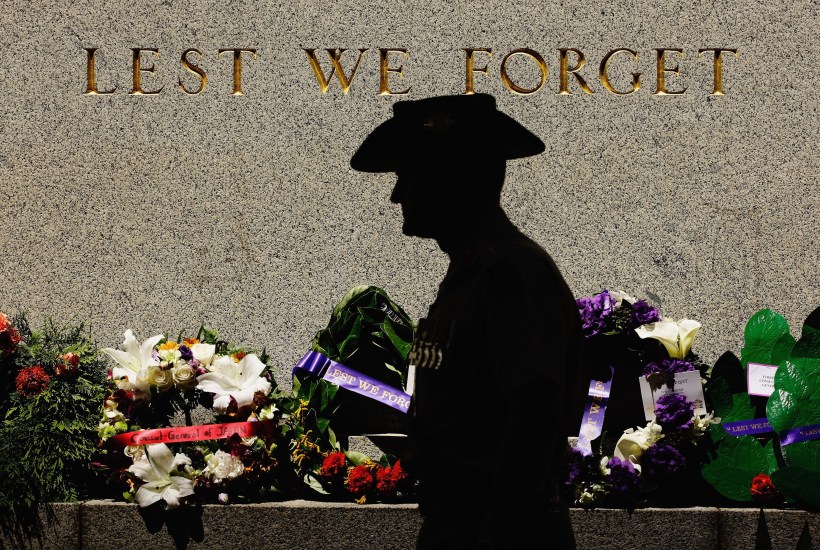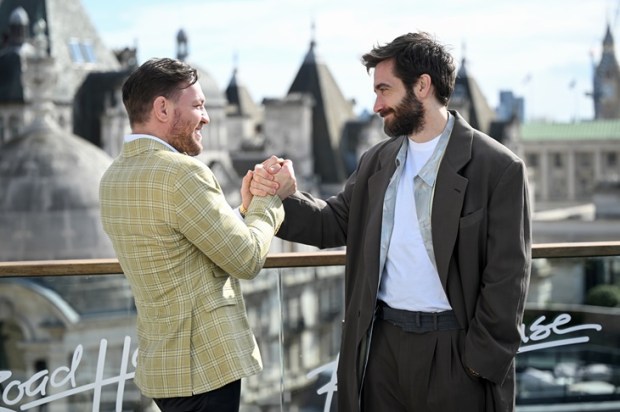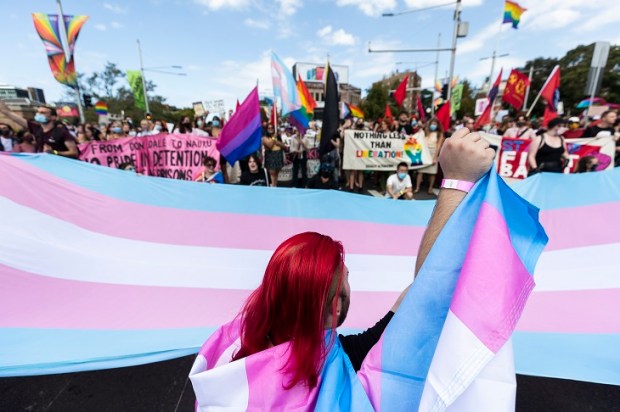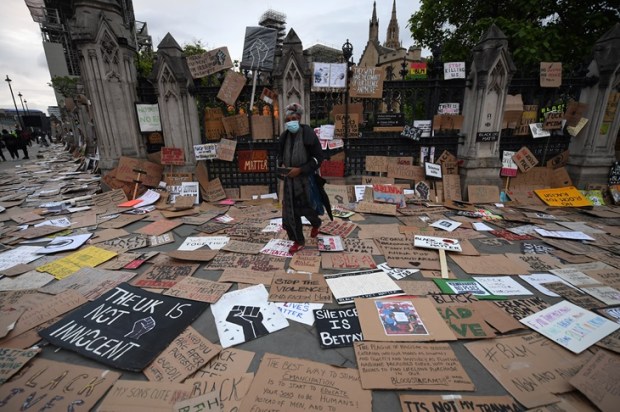Today, we mark the one-hundredth anniversary of the signing of the armistice which brought an end to the First World War. It is a time for remembrance, but it seems not all our fallen heroes are being treated with the same amount of respect.
Sister Mary Nicolay trained under Florence Nightingale, and served as a nurse with the Western Australian forces in the Boer War from 1899 to 1901.
Private Charles Duff was born and raised in Welshpool. He served with the 11th Australian Infantry Battalion, Australian Imperial Force, and was twenty-one years old when he was killed in action in France, on April 7, 1917.
Private A. M. Griffiths served with the Australian Women’s Army Service in the Second World War. She passed away at the age of 44, leaving her husband, Warrant Officer 1st Class I. R Griffiths, to raise their three children, Bessy, Leslie, and June.
Corporal Des Ellis served in Korea, and was home on leave recovering from his wounds when he was killed in a tragic motoring accident.
Other than their service, what each of these people has in common is burial in Perth’s Karrakatta Cemetery; that, and fact that their headstones are currently under threat of removal as part of the so-called ‘renewal’ processes being undertaken by the Metropolitan Cemeteries Board, with the tacit approval of the Western Australian state government. And unfortunately, they are far from alone.
Sergeant Billy Date, served with the 11th Battalion at Gallipoli. A small white plaque now stands beside his headstone, like an insulting white feather. It reads “This grave is in a proposed Cemetery Renewal area. Please contact Client Services.” The subtext is clear. Billy and his mates will soon be removed, and all but forgotten.
Yes, names will be etched on brass plaques in some secluded corner of the cemetery, but actual burial plots, where family and grateful strangers alike can come to pay their respects, will be lost, and in time other graves will be dug over those of men and women who fought for the soil in which they lie.
Just last week, WA’s Governor and former defence minister, Kim Beazley, spoke of what he described as the intangible social compact that exists between Australian citizens and the service and veterans community. He went on to extend that, implicitly, to include their families, but I think the current situation at Karrakatta requires that we are even more explicit than that. We owe these men and women our continued liberty, and we owe their families not only a debt of gratitude for their service, but the reassurance that we will continue to show them our very deepest respect in years to come.
To say that, just 100 years after the guns fell silent on the Western Front, we can no longer visit the grave of, for example, Warrant Officer 1st Class Alexander Rankin of the Australian Army Medical Corp, and pay our respects where his body lies, is to rubbish any such reassurance.
I have walked through Karrakatta in recent weeks, and the names and the stories are sadly too many to more than simply list. More than 100 souls, whose memorials are being threatened on the very day that we commemorate the silencing of the guns 100 years ago, with 100 bugle calls across our city.
One of them, Gunner J. A. Evans, served with the 8th Field Artillery Brigade. The simple, pristine brass plaque on his headstone reads “His duty fearlessly and nobly done. Ever remembered.” Sadly, today, one of these statements seems truer than the other by a magnitude too tragic for us to even begin to quantify.
The 100 Memorials at Risk in Karrakatta Cemetery
- Lance Corporal W. Anderson, 1 Australian Auxiliary Hospital
- Private H. M. Armstrong, 51 Battalion
- Sergeant S. Atkinson, Royal Australian Engineers
- Corporal G. Birchall, 11 Battalion
- Lieutenant Commander P. R. Birchall, Royal Australian Naval Reserve
- Private R. M. Bryson, 44 Battalion
- Sapper R. R. G. Butcher MM, 2 Field Company Engineers
- Corporal J. Cale, Corps of Signals
- Petty Officer W. B. Clegg, Royal Australian Navy
- Warrant Officer D. E. Collingwood, 2 Depot Unit of Supply
- Private J. A. Collingwood, Australian Women’s Army Service
- Corporal J. J. Copley, Army Ordinance Corps
- Corporal K. H. Cormack, 2/11 Battalion
- Private H. M. S. Craig, 11 Battalion
- Private C. C. Cuthbert, 51 Battalion
- Private S. P. Dale, Veterinary & Remounts Service
- Sergeant W. H. Date, 11 Battalion
- Trooper J. F. Davies, 10 Light Horse
- Lance Corporal L. A. Denbigh DCM, 13 Field Ambulance
- Corporal W. Dennerley DCM MM, Labour Service
- Private H. V. Emery DCM, Labour Service
- Surgeon Commander H. H. Field-Martell, Royal Australian Naval Reserve
- Private E. S. Fishleigh, Army Medical Corps
- Trooper L. L. Freeth. 10 Light Horse
- Sapper C. C. Gibb, 3 Tunnelling Company
- Private A. G. Glaskin, 11 Battalion
- Private C. Golding, 5 Works Company
- Private D. E. K. Granberg, 2/16 Infantry Battalion
- Private A. M. Griffiths, Australian Women’s Army Service
- Private W. E. Hackett, 2/28 Infantry Battalion
- Lance Corporal H. Hall, HQ Guard Battalion
- Private W. H. Harman, 2/11 Infantry Battalion
- Private F. F. Hatton, 2 Machine Gun Battalion
- Corporal L. Henson, Army Ordnance Corp
- Private F. A. Higgins, 2/5 Commando Squadron
- Private E. J. Hill, 32 Battalion
- Sapper W. Hitch, Royal Australian Engineers
- Sergeant F. A. Hume, Corps of Signals
- Flight Sergeant D. C. Humphries, Royal Australian Air Force
- Private F. W. Jackson, 2/1 HQ Guard Battalion
- Private E. R. C. James, 51 Battalion
- Private S. C. Jeffrey, 44 Battalion
- Lance Corporal J. J. Jose, 11 Battalion
- Private W. J. Kemp, 2 Pioneer Battalion
- Private H. Kilpatrick, 10 Battalion
- Gunner R. H. Leach, 10 Field Artillery Battalion
- Private J. Leonard, 2/14 Infantry Battalion
- Sergeant T. D. Lester, 10 Battalion
- Private A. H. Levett, Intelligence Corps
- Sapper J. G. Little, 2 Tunnelling Company
- Sergeant G. T. Loane, 16 Battalion
- Sergeant W. A. MacDonald, Royal Australian Air Force
- Lance Corporal H. Makin, 2 Field Company Engineers
- Sergeant C. C. Massingham, Royal Australian Air Force
- Corporal G. MacDowall, 51 Battalion
- Trooper H. McMurray, 4 Light Horse Regiment
- Private G. R. McTaggart, 4 Machine Gun Company
- Private M. J. McTavish, Labour Service
- Sergeant W. Mead, 5 Field Ambulance
- Regimental Quarter Master Sergeant P. Miller, 11 Battalion
- Private W. T. Moody, 44 Battalion
- Private C. V. Neave, Labour Service
- Sergeant P. O’Brien, Army Personnel Depot
- Private T. Orr, 16 Infantry Battalion
- Gunner A. E. Page, Royal Australian Artillery
- Private E. J. A. Palmer, 16 Battalion
- Private W. Pennington, 13 Mixed Brigade
- Lance Corporal A. H. Plint, 11 Infantry Battalion
- Sergeant A. J. Plozza, 2/16 Infantry Battalion
- Sapper J. Pope, 3 Tunnelling Company
- Lance Corporal W. J. Prosser, Royal Australian Engineers
- Leading Aircraftsman J. Prosser, Royal Australian Air Force
- Warrant Officer 1 A. Rankin, Australian Army Medical Corp
- Private C. V. Reeve, 24 Battalion
- Private H. E. Ridley, 2 Special Unit
- Trooper T. Robinson, 1 Armoured Regiment
- Major A. E. Saggers, 2/4 Machine Gun Battalion
- Lieutenant Colonel G. D. Shaw MC, 28 Battalion
- Lieutenant J. Shorrock, 28 Battalion
- Lance Corporal F. A. Silbury, 5 Pioneer Battalion
- Private P. A. Smirk, 26 Works Company
- Sergeant J. G. Steel, Army Ordnance Corp
- Private C. W. Stone, 32 Battalion
- Private J. L. Storey, 51 Battalion
- Sergeant B. L. Strickland, 26 Infantry Battalion
- Sergeant K. A. Strudwick, Royal Australian Air Force
- Private W. W. Sutton, 2/11 IMF Battalion
- Aircraftswoman L. J. D. Sutton, Women’s Auxiliary Australian Air Force
- Private E. Taylor, 16 Battalion
- Private A. W. Taylor, 8 Field Ambulance
- Corporal L. Thomas, 2/11 Infantry Battalion
- Leading Aircraftsman S. R. Treadgold, Royal Australian Air Force
- Corporal P. W. Tucker, 11 Field Artillery Brigade
- Warrant Officer 2 H. E. Vine, Army Pay Corps
- Private G. Warren, 16 Battalion
- Private J. Weir, 51 Battalion
- Sergeant W. J. Wheatley, 2/5 Field Regiment
- Sergeant G. A. Wilson, Corps of Elec. & Mech. Engineers
- Driver F. A. Woodcock, 6 Motor Transport Company
- Stoker Petty Officer G. A. Woodrow, Royal Australian Navy
There are many more besides.
It is my hope, on behalf of their families, and on behalf of all the Australians who owe them a debt of gratitude, that each of these heroes continue to rest undisturbed, and that we as a nation and a community continue to commemorate their service and their sacrifice in a meaningful and enduring way.
‘Renewal’ should never be about burying our past along with our dead. If anything, it should be about renewing our commitment to the ANZAC spirit and leaving our dead to sleep in peace.
Aaron Stonehouse is a Liberal Democrat Member of the Western Australia parliament.
Got something to add? Join the discussion and comment below.
Got something to add? Join the discussion and comment below.
Get 10 issues for just $10
Subscribe to The Spectator Australia today for the next 10 magazine issues, plus full online access, for just $10.


























Comments
Don't miss out
Join the conversation with other Spectator Australia readers. Subscribe to leave a comment.
SUBSCRIBEAlready a subscriber? Log in